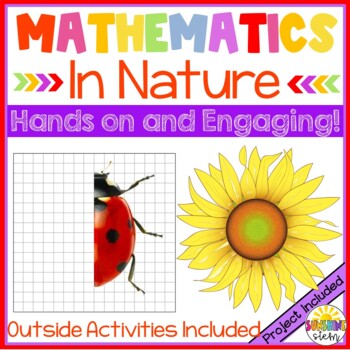Mathematics in Nature {CCSS Math and NGSS Aligned}
- PDF
What educators are saying
Description
Students explore and apply the principles of mathematical patterns in nature in a fun and engaging way! First, students identify and describe patterns in the natural world before heading outside to find patterns on their own. Next, students begin to explore number patterns in nature using the Fibonacci sequence. Fin fingerprint activity keeps students interested and engaged! Next, explore cycles in nature by creating a model on paper using 3-dimensional objects. Rubric included. Students are introduced to mathematical relationships in nature by connecting geometric shapes with natural objects as well as identifying symmetry in nature. Finally, students create a graph of data to analyze plant growth with different variables.
These versatile lessons and project are a great way to connect science and math. The product can be used during math OR during science time! It can also be used all at once as a unit or broken up throughout the year as engaging, hands-on supplements to core content.
This product supports both math and science standards:
Math –
4.MD.B.4
4.G.A.3
4.OA.C.5
5.MD.B.2
Science- NGSS Connections
Cross Cutting Concepts -
Patterns
Observed patterns in nature guide organization and classification and prompt questions about relationships and causes underlying them.
Systems and System Models
A system is an organized group of related objects or components; models can be used for understanding and predicting the behavior of systems.
Scientific and Engineering Practices -
Developing and Using Models
A practice of both science and engineering is to use and construct models as helpful tools for representing ideas and explanations. These tools include diagrams, drawings, physical replicas, mathematical representations, analogies, and computer simulations.
Using Mathematical and Computational Thinking
In both science and engineering, mathematics and computation are fundamental tools for representing physical variables and their relationships. They are used for a range of tasks such as constructing simulations; statistically analyzing data; and recognizing, expressing, and applying quantitative relationships.
This product is part of STEM From Nature.





